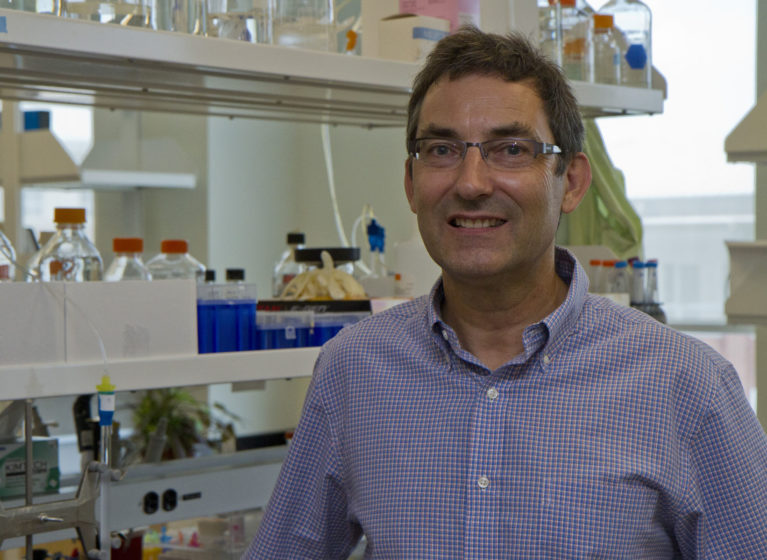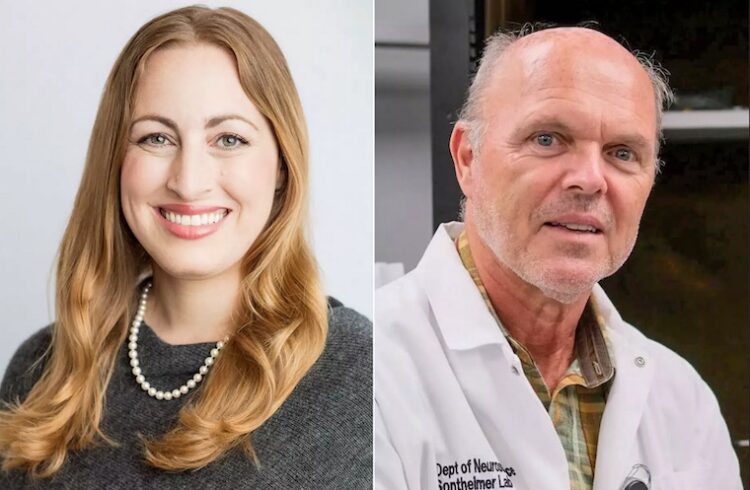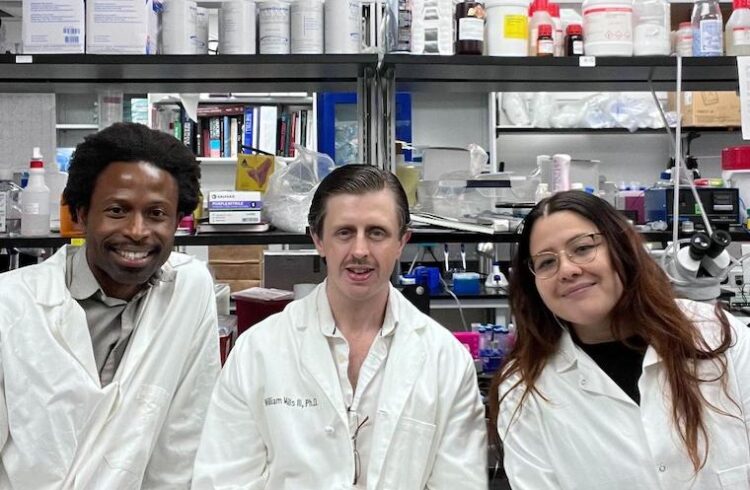
Molecular and cell biologists at the University of Virginia Health System have discovered new information about how the Ebola virus works that could eventually lead to new drug treatments for the deadly virus.
No known cure exists for the Ebola virus, which causes hemorrhagic fever and can be fatal in up to 90 percent of cases. People who are infected can have extensive bleeding in and from the body but usually die of shock, according to the National Institutes of Health. The disease has only been detected among people living in parts of Africa, but there are concerns Ebola could be used as a bioterrorism agent.
UVA’s researchers focused on how the Ebola virus enters healthy cells. “What we discovered is a very important piece of the Ebola virus life cycle. We found a key that opens the cellular lock which, in turn, lets the virus in,” explains Lukas Tamm, PhD, the Harrison Distinguished Professor of Molecular Physiology and Biological Physics and director of UVA’s Center for Membrane Biology.
The UVA team found out how a critical piece of the glycoprotein that sits on the surface of the Ebola virus, called the fusion loop, is responsible for the penetration of the virus into a healthy cell. The fusion loop changes its structure to allow Ebola to enter the cell in a process called membrane fusion, which Tamm likened to the clenching of a fist. The front end of the fusion loop punches a hole into the healthy cell membrane, connecting or fusing the two membranes.
“Ebola has to get into the cell in a controlled way, make thousands of copies of itself, spread into other cells and then do its damage,” Tamm says. “But now that we have images of these molecules, we could design drugs that better target Ebola. That’s the hope here, although there are still many hurdles to overcome before this basic science discovery can be translated into treatments for patients.”
The research – performed in collaboration with the lab of Judith White, PhD, a UVA Professor of Cell Biology – was done on a $2 million nuclear magnetic resonance spectroscopy instrument bought by UVA through a shared-instrumentation grant from the National Institutes of Health.
Their findings were published online June 20 in the journal Proceedings of the National Academy of Sciences (PNAS). The paper, titled “Structure and function of the complete internal fusion loop from Ebolavirus glycroprotein 2,” can be found at the journal’s website.


